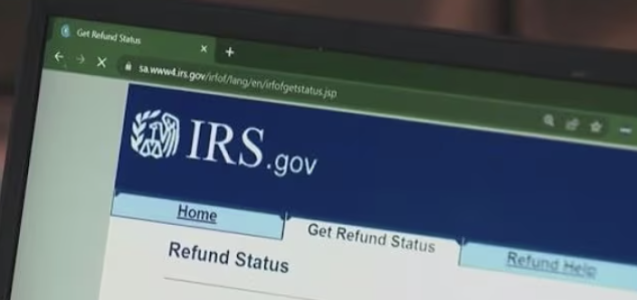IRS announces payment changes starting September 30—what it could mean for you
By
Veronica E.
- Replies 0
The IRS is preparing to roll out a major shift at the end of September that will affect how many Americans receive their money.
Officials say the update is designed to make the process faster and more secure, but it may also require some people to adjust the way they’re used to getting refunds and benefits.
Most taxpayers won’t need to do anything at all, while a smaller group could see changes they’ll want to plan for.
The move is part of a broader modernization effort, and it’s raising both optimism and questions.
For older adults in particular, it’s important to understand what’s happening and how it might affect you.

The IRS moves away from paper checks
For decades, paper checks have been a standard part of tax season and benefit payments.
That’s about to change.
Starting September 30, the IRS will phase out most paper checks in favor of electronic deposits or prepaid Direct Express® cards.
The shift is designed to modernize the system, reduce fraud, and bring payment processing in line with today’s digital banking world.
While exceptions remain, the default will soon be digital.
Why the shift is happening
Officials say the benefits of electronic payments are clear: speed, safety, and savings.
According to the Social Security Administration, paper checks are 16 times more likely to be lost, stolen, or tampered with than direct deposits.
The government also spends significantly more to process checks—about $0.50 each compared to just $0.15 for electronic payments.
Multiplied across millions of transactions, the savings are substantial.
Also read: New IRS form could unlock extra tax savings for seniors in 2025
Who will feel the impact
If you already use direct deposit for refunds or Social Security, nothing will change for you.
In fact, most Americans are already receiving payments electronically.
But more than 600,000 people—many of them older adults or those without easy access to banking—still receive paper checks.
For this group, the IRS will be sending out notices and guidance on how to make the switch.
Exceptions for special cases
Not everyone will be required to move to digital payments.
Individuals who don’t have access to a bank account or other electronic options can apply to continue receiving paper checks.
These cases will be reviewed individually by the Treasury.
The goal, officials say, is to modernize while still making sure vulnerable groups aren’t left behind.
Also read: IRS issues warning on costly tax credit errors that could cost you $5,000
What this means for tax refunds
During the last tax season, the IRS issued more than 93.5 million refunds, and nearly 87 million were sent via direct deposit.
Only about 7% were delivered by paper check.
For those still waiting on checks, the new system could mean faster refunds—less than 21 days compared to six weeks or more.
It also lowers the risk of a refund being lost or delayed in the mail.
Also read: IRS employee’s data access request raises concerns over taxpayer privacy
How Americans spend their refunds
A Talker Research survey shows that refunds aren’t just extra cash—they’re part of household planning.
The average refund is about $1,700, though that amount can vary depending on income, tax credits, and other factors.
Also read: Uh oh! Your bank account could be seized by the IRS. Here’s why and how.
Concerns from lawmakers
Some lawmakers, including Senator Elizabeth Warren, have raised concerns that older adults, rural residents, and those less comfortable with technology may be left behind.
They argue that while modernization is important, every effort must be made to protect access for vulnerable groups.
Federal agencies say they are working to ensure that no one is excluded.
Also read: Tax chaos could be a goldmine—for the wrong people. Taxpayers at risk amidst as IRS uncertainty
What you should do next
If you’re still receiving paper checks, here are some steps to prepare:
The IRS plans to issue additional guidance ahead of the 2026 tax season, which may bring further updates.
For now, preparing early ensures you’ll receive payments smoothly and on time.
Read next:

Are you ready to go digital, or do you still prefer the old-fashioned paper check? Have you ever had an issue with a delayed or lost refund? Share your thoughts with our community—we’d love to hear your perspective.
Officials say the update is designed to make the process faster and more secure, but it may also require some people to adjust the way they’re used to getting refunds and benefits.
Most taxpayers won’t need to do anything at all, while a smaller group could see changes they’ll want to plan for.
The move is part of a broader modernization effort, and it’s raising both optimism and questions.
For older adults in particular, it’s important to understand what’s happening and how it might affect you.

Many Americans will soon see changes in how they receive government payments. Image Source: YouTube / KREM 2 News.
The IRS moves away from paper checks
For decades, paper checks have been a standard part of tax season and benefit payments.
That’s about to change.
Starting September 30, the IRS will phase out most paper checks in favor of electronic deposits or prepaid Direct Express® cards.
The shift is designed to modernize the system, reduce fraud, and bring payment processing in line with today’s digital banking world.
While exceptions remain, the default will soon be digital.
Why the shift is happening
Officials say the benefits of electronic payments are clear: speed, safety, and savings.
According to the Social Security Administration, paper checks are 16 times more likely to be lost, stolen, or tampered with than direct deposits.
The government also spends significantly more to process checks—about $0.50 each compared to just $0.15 for electronic payments.
Multiplied across millions of transactions, the savings are substantial.
Also read: New IRS form could unlock extra tax savings for seniors in 2025
Who will feel the impact
If you already use direct deposit for refunds or Social Security, nothing will change for you.
In fact, most Americans are already receiving payments electronically.
But more than 600,000 people—many of them older adults or those without easy access to banking—still receive paper checks.
For this group, the IRS will be sending out notices and guidance on how to make the switch.
Exceptions for special cases
Not everyone will be required to move to digital payments.
Individuals who don’t have access to a bank account or other electronic options can apply to continue receiving paper checks.
These cases will be reviewed individually by the Treasury.
The goal, officials say, is to modernize while still making sure vulnerable groups aren’t left behind.
Also read: IRS issues warning on costly tax credit errors that could cost you $5,000
What this means for tax refunds
During the last tax season, the IRS issued more than 93.5 million refunds, and nearly 87 million were sent via direct deposit.
Only about 7% were delivered by paper check.
For those still waiting on checks, the new system could mean faster refunds—less than 21 days compared to six weeks or more.
It also lowers the risk of a refund being lost or delayed in the mail.
Also read: IRS employee’s data access request raises concerns over taxpayer privacy
How Americans spend their refunds
A Talker Research survey shows that refunds aren’t just extra cash—they’re part of household planning.
- 79% of Americans expect to get a refund this year.
- 52% consider their refund an essential part of the budget.
- 77% plan to spend the money on essentials like groceries, rent, or bills.
- 37% use refunds to pay down credit card debt.
- 8% treat themselves to non-essentials such as clothing, gadgets, or entertainment.
The average refund is about $1,700, though that amount can vary depending on income, tax credits, and other factors.
Also read: Uh oh! Your bank account could be seized by the IRS. Here’s why and how.
Concerns from lawmakers
Some lawmakers, including Senator Elizabeth Warren, have raised concerns that older adults, rural residents, and those less comfortable with technology may be left behind.
They argue that while modernization is important, every effort must be made to protect access for vulnerable groups.
Federal agencies say they are working to ensure that no one is excluded.
Also read: Tax chaos could be a goldmine—for the wrong people. Taxpayers at risk amidst as IRS uncertainty
What you should do next
If you’re still receiving paper checks, here are some steps to prepare:
- Check your current method. Confirm if you’re set up for direct deposit.
- Consider Direct Express®. This prepaid debit card is an option if you don’t have a bank account.
- Watch for official notices. The IRS and SSA are contacting those who need to update their information.
- Ask for help. Reach out to family, your bank, or a local community group if you need assistance with the switch.
The IRS plans to issue additional guidance ahead of the 2026 tax season, which may bring further updates.
For now, preparing early ensures you’ll receive payments smoothly and on time.
Read next:
- Could you unlock $141,900 in tax-free retirement income this year?
- Major US city extends deadline for homeowners to claim tax freeze and refunds
- Millions set to lose government health coverage after new tax law takes effect
Key Takeaways
- The IRS will begin phasing out paper checks on September 30, shifting most payments to electronic deposits or Direct Express® cards.
- Electronic refunds are faster, usually arriving in less than 21 days compared to six weeks or more for paper checks.
- Exceptions will remain for people facing hardship or without access to banking, reviewed case by case by the Treasury.
- A recent survey shows most Americans plan refunds in advance, with the majority using them for necessities or paying down debt.
Are you ready to go digital, or do you still prefer the old-fashioned paper check? Have you ever had an issue with a delayed or lost refund? Share your thoughts with our community—we’d love to hear your perspective.






